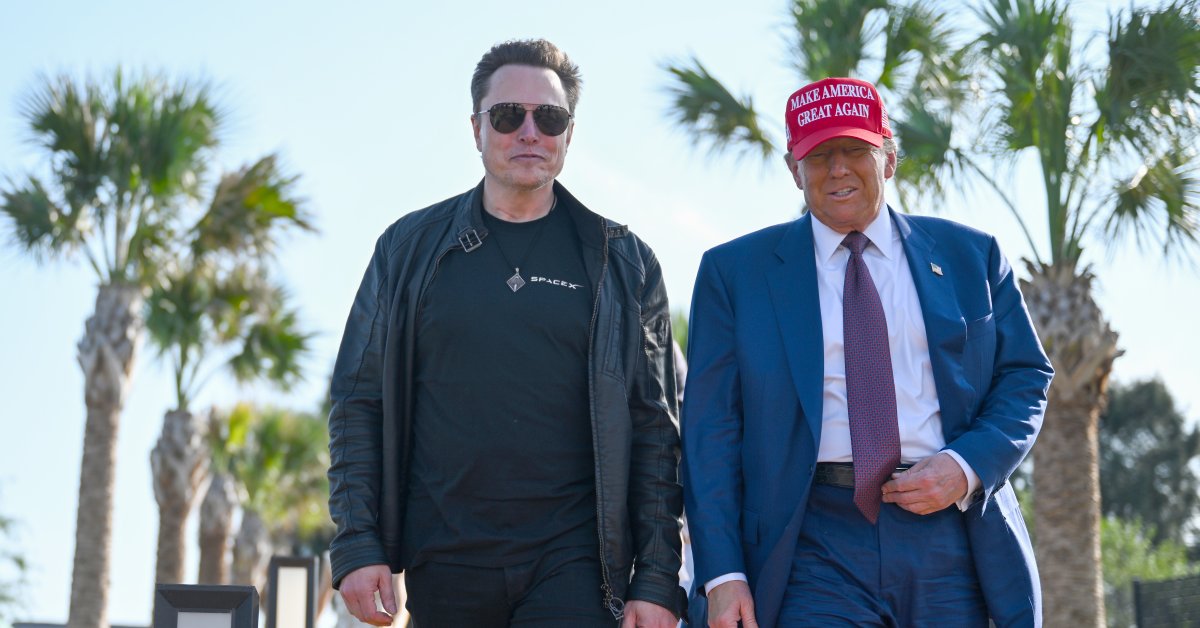What happens in Washington decidedly does not stay in Washington, with practically every action taken by the richest and most powerful country in the world having a near-immediate global reaction—on tariffs, the wars in Ukraine and Gaza, global health, and more. Sometimes those reactions aren’t even confined to the planet—as the recent social-media smackdown between President Donald Trump and former adviser Elon Musk illustrated.
On June 5, as the feud between the two erstwhile besties escalated, Trump posted on his Truth Social Platform, “The easiest way to save money in our Budget, Billions and Billions of Dollars, is to terminate Elon’s Governmental Subsidies and Contracts. I was always surprised that Biden didn’t do it!”
Just over 90 minutes later, in a post on X, Musk clapped back: “In light of the President’s statement about cancellation of my government contracts, @SpaceX will begin decommissioning its Dragon spacecraft immediately.”
Not long after that post went wide, Musk quietly deleted it. Later that evening, an X user posted to Trump and Musk, “This is a shame this back and forth. You are both better than this. Cool off and take a step back for a couple days.” Minutes later, Musk responded, “Good advice. OK, we won’t decommission Dragon.”
Read more: The Musk-Trump Implosion Can Be Seen From Space
That defused the immediate emergency, but the threat and counterthreat raised questions about just how dependent America’s space efforts are on the whims of two sometimes mercurial billionaires. Could a mere word from Musk ground the nation? Could a stroke of a Trump Sharpie similarly hobble SpaceX? The short answer in both cases is maybe, but not likely.
There’s no overstating just how central SpaceX has become in the space sector in the 23 years since it was founded as the Space Exploration Technologies Corporation. Since the inaugural flight of the company’s Falcon 9 in 2010, the rocket has become the world’s workhorse vehicle for rides to orbit, with 485 completed missions, including 440 acrobatic landings of its reusable first stage. The rocket and its Dragon spacecraft provide regular service to the International Space Station (ISS), carrying crews up and down, and ferrying cargo and supplies aboard uncrewed Dragons. In 2024, the company’s larger Falcon Heavy launched NASA’s Europa Clipper spacecraft to Jupiter’s moon Europa. It is set to launch the ambitious Nancy Grace Roman Telescope in May 2027.
The working relationship between SpaceX and the government is by no means limited to NASA. In April, as Ars Technica reports, the U.S. Space Force awarded the company a $5.9 billion contract, making SpaceX the leading provider of launch services for Pentagon satellites. The military is also a major customer of SpaceX’s Starlink satellite constellation, with 50 military commands now using the orbiting Internet service, according to Defense News.
“We have $22 billion in government contracts,” said Gwynne Shotwell, SpaceX’s president and COO, in a live streamed public panel last year. “We earned that. We bid it, we were the lowest price, best bidder, we won and we execute.”
If anything, the company is going to have the opportunity to execute still more, reinforcing the ties between SpaceX and the government. In 2021, NASA selected SpaceX’s still-in-development Starship rocket to serve as the lander that is planned to carry American astronauts down from lunar orbit to the surface of the moon sometime before the end of the decade. In 2024, the space agency tapped SpaceX to build the vehicle that will nudge the ISS out of orbit when the program ends in 2030. And in May, Trump’s so-called skinny budget called for NASA to cancel its over-budget and behind-schedule Space Launch System, the 21st century answer to the 1960s’ Saturn V moon rocket, leaving Starship as the likeliest successor.
Meantime, while Boeing’s Starliner spacecraft was supposed to be joining Dragon in providing rides to the ISS—taking a share of the launch business revenue from SpaceX—Starliner famously failed in its inaugural flight last year. This left astronauts Butch Wilmore and Suni Williams stranded aboard the station for 8 months, on a mission that was supposed to last merely eight days. Similarly, Blue Origin, the rocket company founded by Musk’s fellow mega-billionaire Jeff Bezos, was expected to provide some launch-service competition for SpaceX, but the company has managed just one, only partially successful orbital launch of its New Glenn rocket, in January 2025, and has limited most of its activity to flying popgun suborbital missions for wealthy space tourists.
“It’s not a planned monopoly,” said Shotwell in the live stream. “If our competitors could get it together…”
All of this leaves SpaceX and the government mutually interdependent, with Washington counting on the company to provide services no one else currently can, and the company happy for the paying work. That’s not to say neither one could foul the joint nest. Trump’s nomination of private astronaut and Musk friend Jared Isaacman as NASA administrator was widely seen as a sign of Musk’s influence on the president—and Trump’s decision on May 31 to pull the nomination was similarly seen as the first sign of the rift between Musk and Trump. But the president has made no other moves against Musk-world, and Musk’s decision to delete his provocative post on X may have cooled tempers on both sides. SpaceX investors and other customers may serve as a brake on Musk’s worst tendencies, and lawmakers from space-heavy states including California, Texas, and Florida may similarly restrain Trump.
None of this says that neither man is beyond acting against his own—and his government’s or his company’s—best interests. The scorpion in the venerable fable famously stung the frog that was its only ride across the river—explaining before they both sank and drowned that “it’s in my nature.” Trump’s and Musk’s natures have always been impulsive. The space and defense sectors can only hope the two men show some restraint now.








